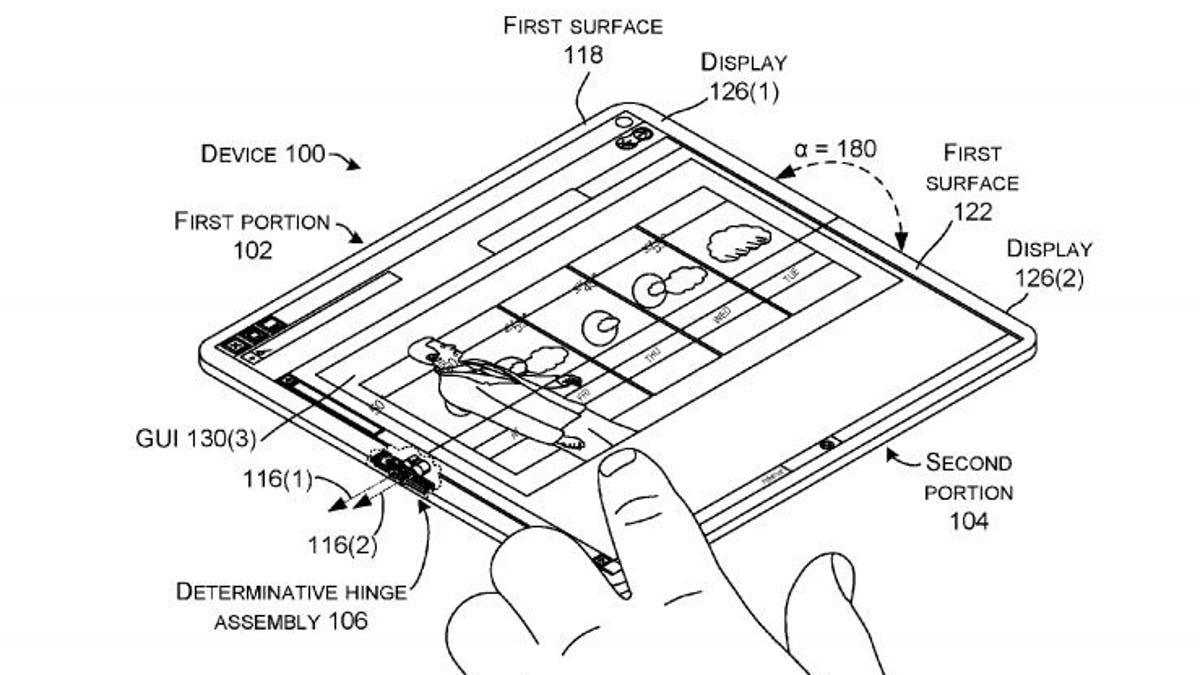Microsoft's fancy hinge patent could mean folding phones
But would Microsoft actually build one?

Samsung is building a folding phone. ZTE already did. And now, there are pictures of some cleverly articulated screens in a new Microsoft patent application -- pictures that show off a pretty intriguing new hinge.
The ZTE Axon M shows off dual screens -- and a big gap.
Wait, isn't Microsoft done building phones? Not necessarily: We've heard rumors about a Surface Phone for years, and recently the company got the full Windows 10 operating system working on smartphone-style chips again.
But I digress. Microsoft's hinge is interesting because it could theoretically solve one of the biggest issues with dual-screen tablets and phones we've seen so far -- the huge gap when you lay them flat.
Tradtionally, devices need to leave a gap between the two screens to keep them from being damaged when you fold the device, but not Microsoft's fancy "determinative hinge." It flexes slightly as you open and close the screen, pushing the two pieces slightly apart, to keep them from being damaged.
Of course, there's nothing to say that this design will ever be used, or that it'd necessarily be used in a phone. Microsoft could easily apply it to a larger laptop or tablet design instead, if the company employs it at all.
The application was spotted by Twitter user WalkingCat and reported by MSPowerUser. Microsoft did not immediately return a request for comment.

